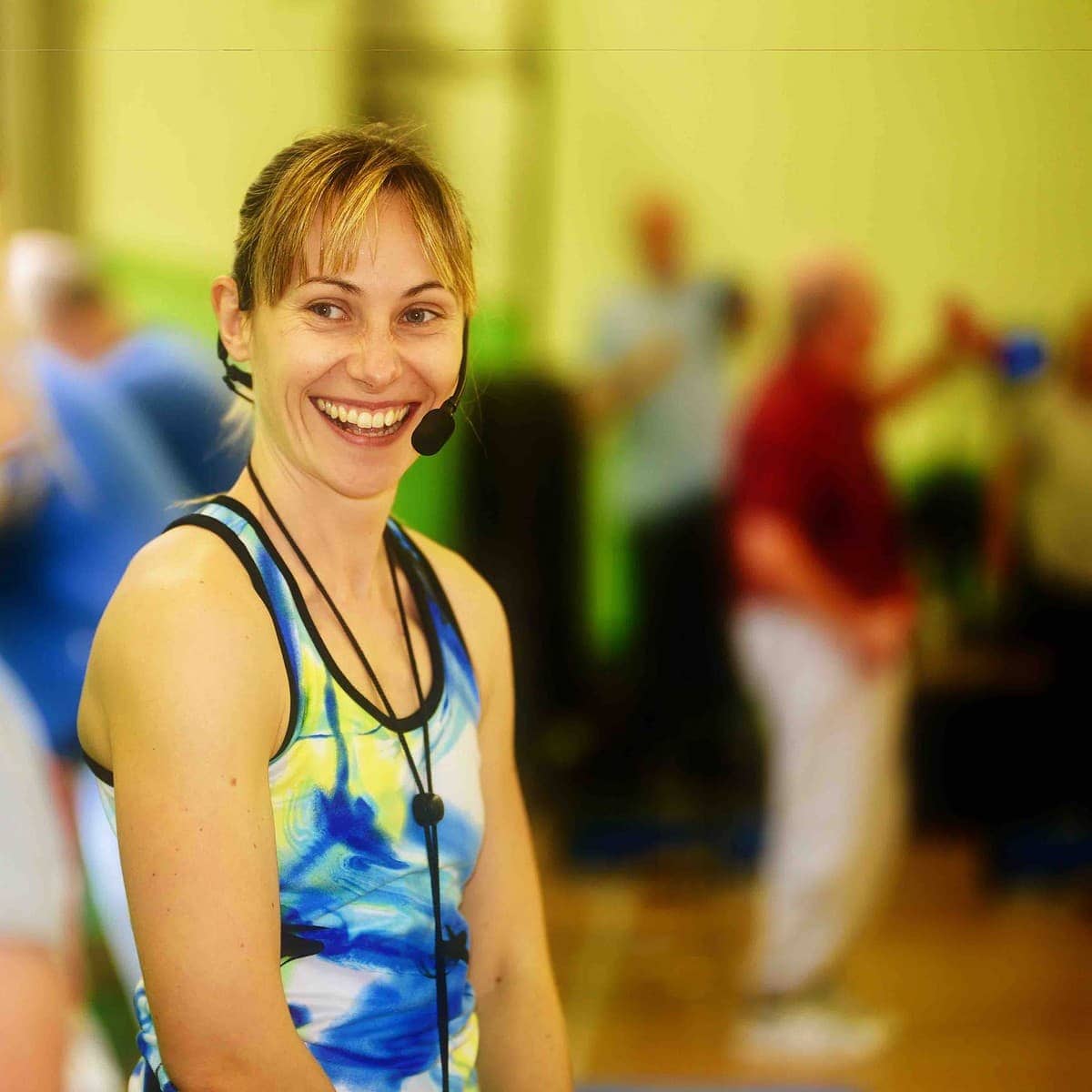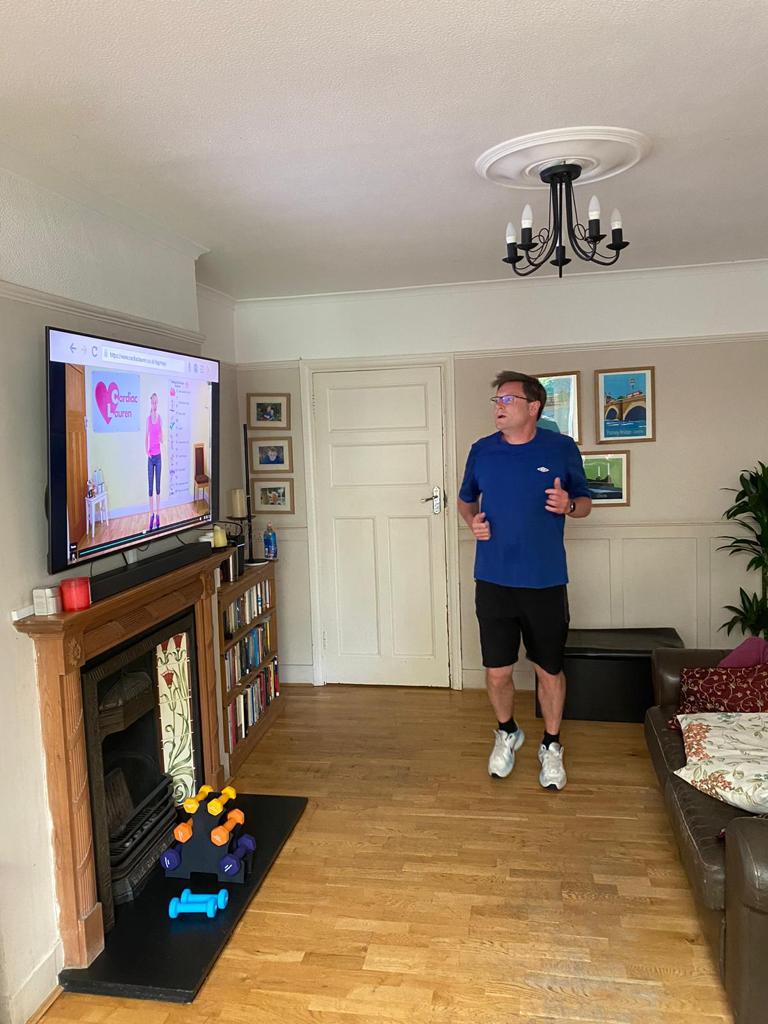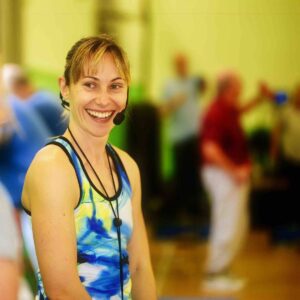The Power of Language in Cardiac Rehabilitation
Vocaboly: Lauren, before we get into the role of language in cardiac rehabilitation, can you tell us a little about your background and how you came to start Cardiac Lauren?
Lauren’s Journey in Cardiac Rehabilitation
Lauren Walker: Of course. My name is Lauren Walker and I’m a BACPR-certified and GP Referral Qualified exercise professional specialising in cardiac rehabilitation. I was one of the Lead Exercise Instructors in the NHS Phase 3 Cardiac Prevention and Rehabilitation programme based at the Surbiton Health Centre, Surrey, from January 2011 to October 2020. I’ve also been running Phase 4 cardiac rehab community classes in Surrey since 2005.

Over the years, I’ve seen first-hand the challenges cardiac patients face and have helped thousands of people regain their health. When the pandemic struck, I took my classes online to continue providing Phase 3 and Phase 4 cardiac rehab support to my community during lockdown. That experience showed me just how many people needed access to structured, remote rehabilitation, which is why I created Cardiac Lauren as a fully accessible, online programme.
The Role of Language in Cardiac Rehabilitation
Vocaboly: That’s an incredible journey. As the founder of Cardiac Lauren, you’ve helped so many people regain confidence and strength after a heart event. How important is language in the way you communicate with your clients?
Lauren Walker: Language is absolutely crucial in cardiac rehabilitation. Many of my clients come to me feeling uncertain, anxious or even afraid of movement. If I used overly clinical terminology or spoke in a way that was too technical, they might feel overwhelmed and discouraged. That’s why I focus on using simple, clear and positive language, so that every client understands exactly what they need to do and feels encouraged to keep going.
Simplifying Medical Language in Cardiac Rehabilitation
Vocaboly: That makes a lot of sense. Can you give us an example of how you simplify medical or anatomical language when guiding your clients through exercises and explain why certain exercises are important for daily activities?
My goal is to make sure that my clients don’t have to stop and think about what I mean
Lauren Walker: Absolutely. Instead of using terms like quadriceps, hamstrings or adductors, I simply say thighs or calves. I also explain why we are doing a particular exercise in the context of daily life. For example, squats help with getting in and out of a chair or climbing stairs, while a chest press strengthens the arms for activities like putting items in an oven, cupboard or washing machine. My goal is to make sure that my clients don’t have to stop and think about what I mean, they should be able to follow instructions effortlessly. When I say something like, “Lift through your thighs and keep your calves strong,” they instantly understand what to do, whereas if I said, “Engage your quadriceps and control your gastrocnemius,” they might get lost in the terminology and disengage from the exercise.
Using Visual Language for Effective Rehabilitation
Vocaboly: That’s a great approach. You also rely heavily on visual language in your instructions. Can you share how that helps your clients perform movements correctly?
Lauren Walker: Yes! Visual language is essential, especially when teaching movement remotely. Since my programme is online, I can’t always physically correct someone’s posture or form. Instead, I use imagery to guide them. For example, instead of saying, “Keep your spine neutral and engage your core,” I might say, “Imagine there’s a string pulling the top of your head towards the ceiling while your belly button gently tucks in.” That gives them a clear mental picture of what they need to do.
Another example would be something like, “Move your feet as if you’re marching on the spot, feeling light and lifted,” rather than “Perform alternating knee raises.” The more vivid and relatable the instruction, the more naturally it will translate into movement.
Motivating Clients Through Language
Vocaboly: That’s really insightful. Beyond technical clarity, how do you use language to keep your clients motivated throughout their rehabilitation?
Lauren Walker: Motivation is a huge part of what I do. Many of my clients have been through a traumatic experience and they need encouragement as much as they need guidance. I make sure my language is always reinforcing progress, not focusing on limitations.
For instance, I use phrases like, “That’s right, keep going, you’re doing great!” rather than, “No, that’s wrong, try again.” Instead of pointing out mistakes, I guide them to correct themselves in a positive way. If someone struggles with an exercise, I might say, “Let’s slow it down a bit, find your rhythm and keep moving at a pace that feels good for you.” This keeps them engaged and reassured rather than frustrated.
Building Trust Through Language in Cardiac Rehabilitation
Vocaboly: That must make a huge difference in their confidence. How do you see the role of vocabulary in building trust with your clients?
Every small step you take is strengthening your heart and body, consistency is key.
Lauren Walker: Trust is everything in cardiac rehabilitation. Many of my clients are initially hesitant because they’re worried about pushing themselves too hard or doing something unsafe. The way I use language reassures them that they are in control of their progress and that they can trust the process.
For example, rather than saying, “You need to work harder to see results,” I would say, “Every small step you take is strengthening your heart and body, consistency is key.” This shifts the focus from pressure to empowerment. Language builds trust by creating a safe, supportive space where clients feel understood and capable.
Advice for Professionals on Effective Communication
Vocaboly: That’s such a powerful perspective. Finally, what advice would you give to professionals in any field who want to improve how they use language to connect with their audience?
Lauren Walker: I’d say, first and foremost, know your audience. Speak in a way that makes them feel comfortable and empowered. Avoid jargon unless you’re sure your audience understands it and always aim for clarity over complexity.
Second, use positive and encouraging language. Whether you’re in healthcare, business or education, the words you choose can either build confidence or create doubt. Focus on phrasing things in a way that reinforces progress, possibility and trust.

And finally, don’t underestimate the power of visual language. If you can paint a picture with your words, your message will be far more impactful. Whether you’re guiding someone through an exercise, explaining a concept or delivering a speech, the right words can help people truly connect with what you’re saying.
Vocaboly: Fantastic advice, Lauren. Thank you for sharing your insights and the incredible work you do with Cardiac Lauren.
Lauren Walker: Thank you! I appreciate the opportunity to talk about the importance of language in what I do. It really is one of the most powerful tools we have.

